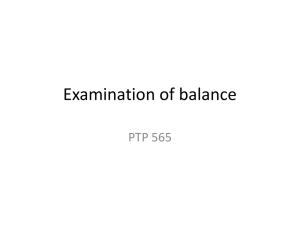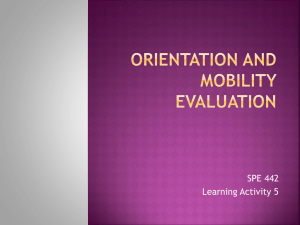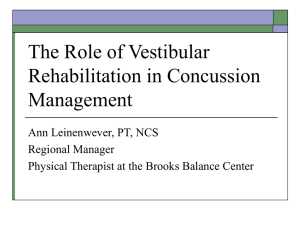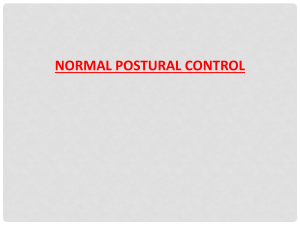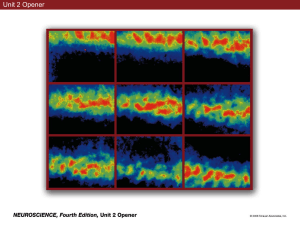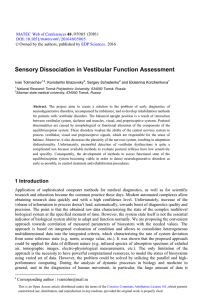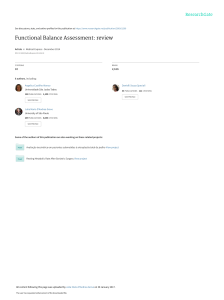Assessment Task 2_THIEL
advertisement
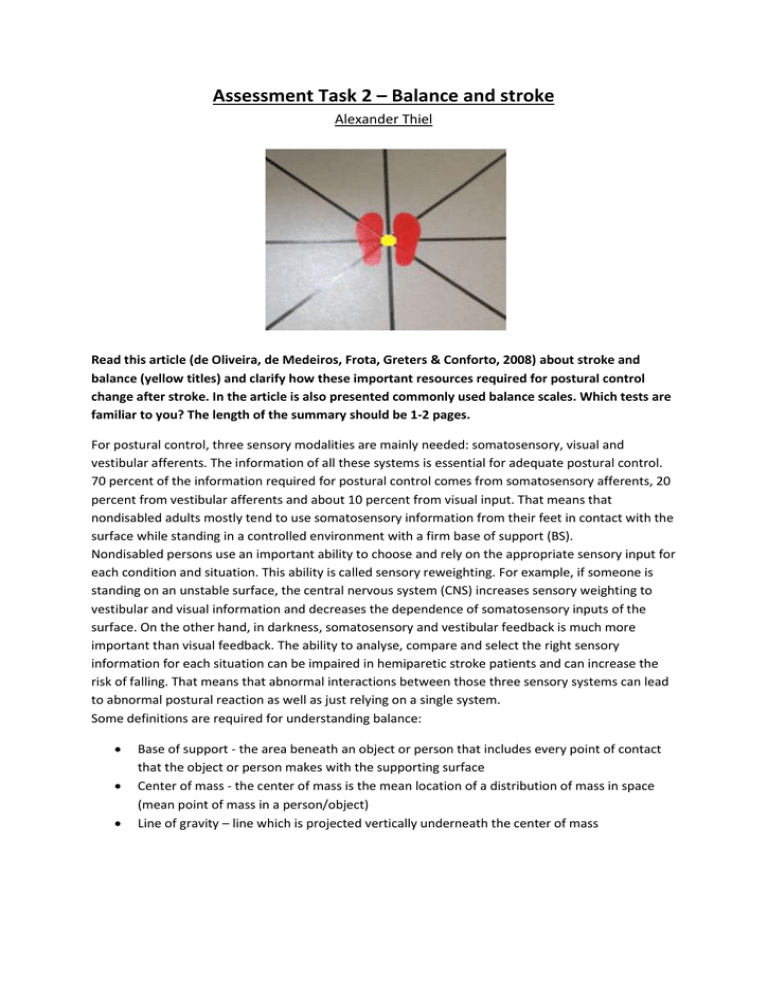
Assessment Task 2 – Balance and stroke Alexander Thiel Read this article (de Oliveira, de Medeiros, Frota, Greters & Conforto, 2008) about stroke and balance (yellow titles) and clarify how these important resources required for postural control change after stroke. In the article is also presented commonly used balance scales. Which tests are familiar to you? The length of the summary should be 1-2 pages. For postural control, three sensory modalities are mainly needed: somatosensory, visual and vestibular afferents. The information of all these systems is essential for adequate postural control. 70 percent of the information required for postural control comes from somatosensory afferents, 20 percent from vestibular afferents and about 10 percent from visual input. That means that nondisabled adults mostly tend to use somatosensory information from their feet in contact with the surface while standing in a controlled environment with a firm base of support (BS). Nondisabled persons use an important ability to choose and rely on the appropriate sensory input for each condition and situation. This ability is called sensory reweighting. For example, if someone is standing on an unstable surface, the central nervous system (CNS) increases sensory weighting to vestibular and visual information and decreases the dependence of somatosensory inputs of the surface. On the other hand, in darkness, somatosensory and vestibular feedback is much more important than visual feedback. The ability to analyse, compare and select the right sensory information for each situation can be impaired in hemiparetic stroke patients and can increase the risk of falling. That means that abnormal interactions between those three sensory systems can lead to abnormal postural reaction as well as just relying on a single system. Some definitions are required for understanding balance: Base of support - the area beneath an object or person that includes every point of contact that the object or person makes with the supporting surface Center of mass - the center of mass is the mean location of a distribution of mass in space (mean point of mass in a person/object) Line of gravity – line which is projected vertically underneath the center of mass The quality and size of the BS is one of the most important parts of balance. Postural stability can be understood as the ability to keep the center of mass (Cm) within the BS. In hemiparetic patients, weakness, impaired muscle control, decreased range of motion and pain can lead to changes in the BS. Studies investigated a positive correlation between balance impairments and decreased lower limb strength. Strategies and solutions for postural control include the ankle, hip and step strategy. The ankle strategy is more effective at keeping the trunk in a stable and vertical position during small movements, which occur from distal to proximal. It depends more on accurate somatosensory input. The hip strategy is superb for faster and larger movements of the CM. This strategy requires adequate vestibular information. The step strategy represents a completely different kind of strategy as the BS adapts to the CM in movement. The balance control can be reactive or anticipatory. Patients with stroke mostly use compensating strategies, like holding objects or using the step strategy more often than nondisabled persons. Also the hip strategy is predominantly used instead of the ankle strategy. Nevertheless, all strategies are often not efficient enough for good stability and can cause falls in patients with stroke. Also the perception of verticality may be abnormal, especially in the presence of neglect. “Pushersyndrome” is characterized as a tendency to lean towards the affected side because of fear of falling to the nonparalyzed side. Altered perception of the body posture is the reason for this phenomenon. The patients experience their body as vertically correct when it is actually tilted to the paralyzed side. Studies found out that patients with pusher syndrome show no disturbed processing of visual and vestibular inputs determining visual vertical. Conclusions about possible effects of the lesion side could not be proved by now. Familiar tests for me, which are mentioned in the article, are: Berg Balance Scale (BBS) – I used it in neurological rehabilitation Timed Get Up & Go (TUG) – I mostly used it in geriatric departments Tinetti Balance Test - I mostly used it in geriatric departments Functional Reach Test (FR) – I used it as a part of BBS Balance Subscale of Fugl-Meyer Test (FM-B) – I didn’t use it often Tests, which I am not familiar with, are: Postural Assessment Scale for Stroke Patients (PASS) Dynamic Gait Index (DGI) Multi-Directional Reach Test (MDRT) Activities-Specific Balance Confidence Scale (ABC)

